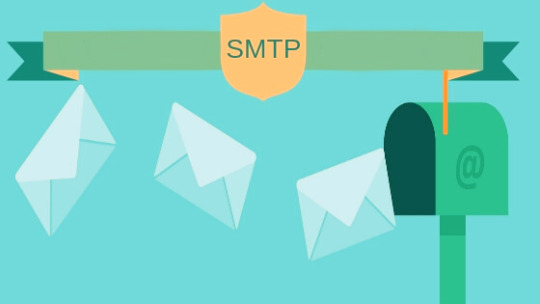Don't wanna be here? Send us removal request.
Text
What does an SMTP server mean?
SMTP servers are complicated, and if you’re just dipping your toe into the how-email-gets-sent world, it’s easy to feel overwhelmed. To help you navigate your email sending, we’ve put together a list of things that will help you understand how an SMTP server works.
What does an SMTP server mean?
Short for Simple Mail Transfer Protocol, a protocol for sending e-mail messages between servers. Most e-mail systems that send mail over the Internet use SMTP to send messages from one server to another; the messages can then be retrieved with an e-mail client using either POP or IMAP. In addition, SMTP is generally used to send messages from a mail client to a mail server. This is why you need to specify both the POP or IMAP server and the SMTP server when you configure your e-mail application...to read more visit - Webopedia.com/.
The Simple Mail Transfer Protocol (SMTP) is a communication protocol for electronic mail transmission. As an Internet standard, SMTP was first defined in 1982 by RFC 821, and updated in 2008 by RFC 5321 to Extended SMTP additions, which is the protocol variety in widespread use today. Mail servers and other message transfer agents use SMTP to send and receive mail messages. Proprietary systems such as Microsoft Exchange and IBM Notes and webmail systems such as Outlook.com, Gmail and Yahoo! Mail may use non-standard protocols internally, but all use SMTP when sending to or receiving email from outside their own systems. SMTP servers commonly use the Transmission Control Protocol on port number 25.

User-level email clients typically use SMTP only for sending messages to a mail server for relaying, and typically submit outgoing email to the mail server on port 587 or 465 as per RFC 8314. For retrieving messages, IMAP and POP3 are standard, but proprietary servers also often implement proprietary protocols, e.g., Exchange ActiveSync.
History
Various forms of one-to-one electronic messaging were used in the 1960s. Users communicated using systems developed for specific mainframe computers. As more computers were interconnected, especially in the U.S. Government's ARPANET, standards were developed to permit exchange of messages between different operating systems. SMTP grew out of these standards developed during the 1970s...read more at - Wikipedia.org/.
SMTP Protocol
The SMTP model is of two type :
End-to-end method
Store-and- forward method
The end to end model is used to communicate between different organizations whereas the store and forward method are used within an organization. A SMTP client who wants to send the mail will contact the destination’s host SMTP directly in order to send the mail to the destination. The SMTP server will keep the mail to itself until it is successfully copied to the receiver’s SMTP.
The client SMTP is the one which initiates the session let us call it as the client- SMTP and the server SMTP is the one which responds to the session request and let us call it as receiver-SMTP. The client- SMTP will start the session and the receiver-SMTP will respond to the request...visit - Geeksforgeeks.org/ to know more.

Benefits of SMTP
SMTP is “simple” and has the following benefits or advantages:
Simplicity
SMTP provides the simplest form of communicating through email messages between various computers in a particular network. ‘Â There are no hassles for the end-users as they only need to type their email and send it to the recipient’s email address. ‘Â The email will just go through a simple process from the SMTP server to an exchange server for the recipient’s computer making the electronic communication simple and not complicated.
Quick Email Delivery
Since SMTP is developed from a simple platform, email messages may be sent easily and quickly. ‘Â As long as one’s SMTP mail server is working and in good condition, one can expect that messages are sent quickly to various recipients.
Reliability
SMTP also offers reliability in terms of outgoing email messages. ‘Â If there are instances where a particular message was not successfully sent, the SMTP server will always try to re-send the same email until the transmission becomes successful. ‘Â This is unlike other means of sending email wherein one may have to try several times in sending out an email.
Option for Dedicated Servers
With SMTP, companies and organization s may opt to have a dedicated server to handle outgoing email messages. ‘Â Although web mail services and ISPs may offer the same services, not many of them can actually provide exclusivity when it comes to mail servers. ‘Â This could mean problems with email transmission. ‘Â But with SMTP, servers are maintained locally and may be configured to exclusively handle very important and sensitive email messages...go to - Benefitof.net/ to read more.
Without an SMTP server, your email won't reach your destination. An SMTP service can help you do this with ease. If you need more information on SMTP then you should visit this site and know more about SMTP.
1 note
·
View note